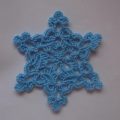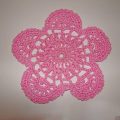New openwork pattern for crochet, step by step MK (photo lesson)
The next lesson is crocheting patterns. Today we look at the new crochet pattern that can be used for sweaters, tops and other items of clothing. Using this openwork pattern you can also get very beautiful handbags and covers for your mobile phone. The fantasies of the application of patterns are endless, the main thing is to connect the fantasy! ? This pattern can not be attributed to simple crochet patterns, more to the average complexity. Nevertheless, the beginner will also cope with the task of viewing the execution of some elements of the pattern. Consideration of the pattern will be in a small area, later we will consider the product with this pattern. Getting started! 1.  2. Knit. The number of loops should be divisible by 4 plus 2 loops
2. Knit. The number of loops should be divisible by 4 plus 2 loops  3. We put the hook into the second loop from the hook, the working loop is not considered
3. We put the hook into the second loop from the hook, the working loop is not considered  4.
4.  5. Three air loops
5. Three air loops  6. Make a cape
6. Make a cape  7. We put the hook on the same loop and knit a “” of three loops and three crochets
7. We put the hook on the same loop and knit a “” of three loops and three crochets  8. When the knob is ready it looks like this.
8. When the knob is ready it looks like this.  9. One air loop
9. One air loop  10. Skip 3 air loops of the chain and thread the hook
10. Skip 3 air loops of the chain and thread the hook  11. A column without nakida
11. A column without nakida  12. Three air loops
12. Three air loops  13. Make a nakid and weave a hook into the same loop where the crochet is knitted
13. Make a nakid and weave a hook into the same loop where the crochet is knitted  14. Knit a knob of three loops and three knit
14. Knit a knob of three loops and three knit  15. One air loop
15. One air loop  16. Further we continue to knit according to points 10-15 to the end of the chain of air loops. The last will be a single crochet in the extreme loop of the chain.
16. Further we continue to knit according to points 10-15 to the end of the chain of air loops. The last will be a single crochet in the extreme loop of the chain.  17. Three air loops
17. Three air loops  18. We turn knitting, we put a cap on and we put a hook into the loop formed on the top of the nipple
18. We turn knitting, we put a cap on and we put a hook into the loop formed on the top of the nipple  19. We knit two columns with one nakida in the same loop
19. We knit two columns with one nakida in the same loop  20. Make a cape
20. Make a cape  21. We put the hook on the top of the next bump
21. We put the hook on the top of the next bump  22. We knit four columns with one nakida in this loop.
22. We knit four columns with one nakida in this loop.  23. In each of the following vertices we knit 4 columns with one nakida
23. In each of the following vertices we knit 4 columns with one nakida  24. Make a cape. Enter the hook into the last loop of the chain of the three air loops of the previous row
24. Make a cape. Enter the hook into the last loop of the chain of the three air loops of the previous row  25. Knit two columns with one nakida in this loop
25. Knit two columns with one nakida in this loop 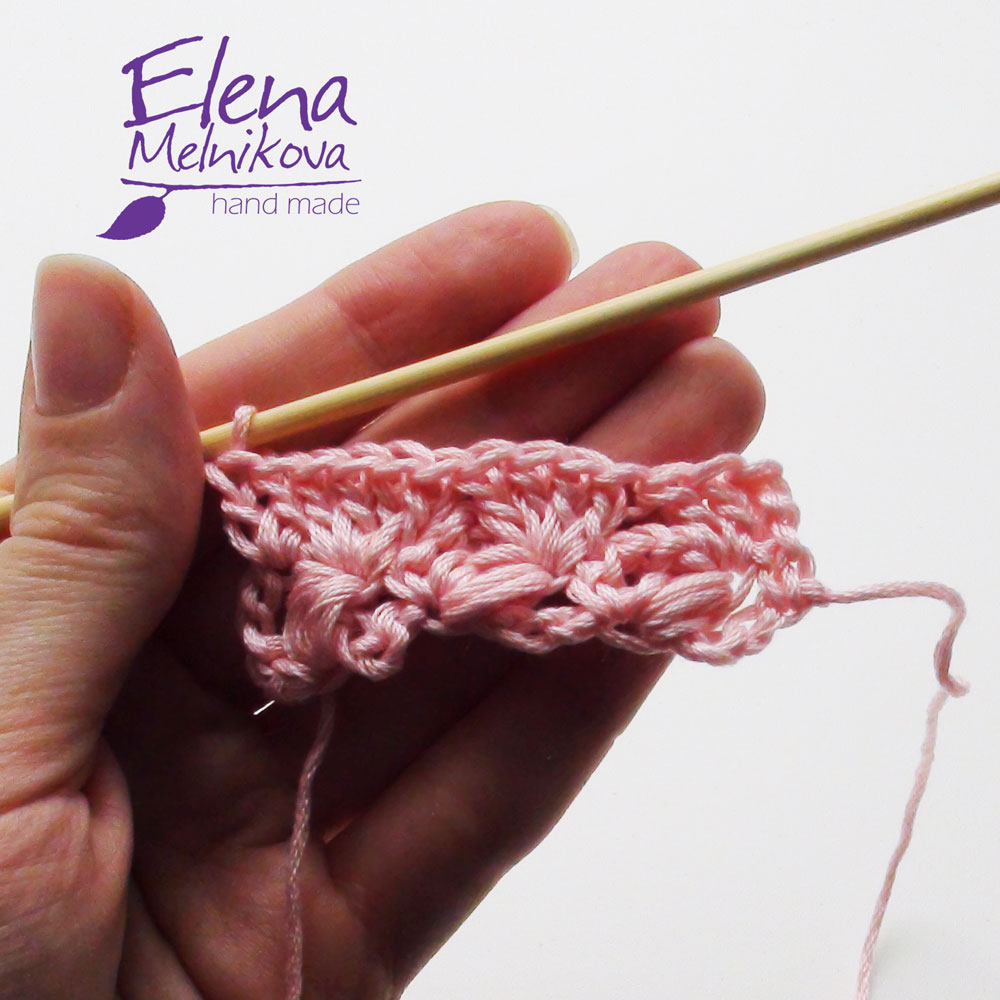 26. One air loop
26. One air loop  27. A single crochet column in the loop of the second column of the previous row
27. A single crochet column in the loop of the second column of the previous row  28. Three air loops
28. Three air loops  29. We carry out the knob from three loops and three nakidov in the same loop, in which the column without knit is knitted
29. We carry out the knob from three loops and three nakidov in the same loop, in which the column without knit is knitted  30. It turns out like this
30. It turns out like this  31. Air loop
31. Air loop 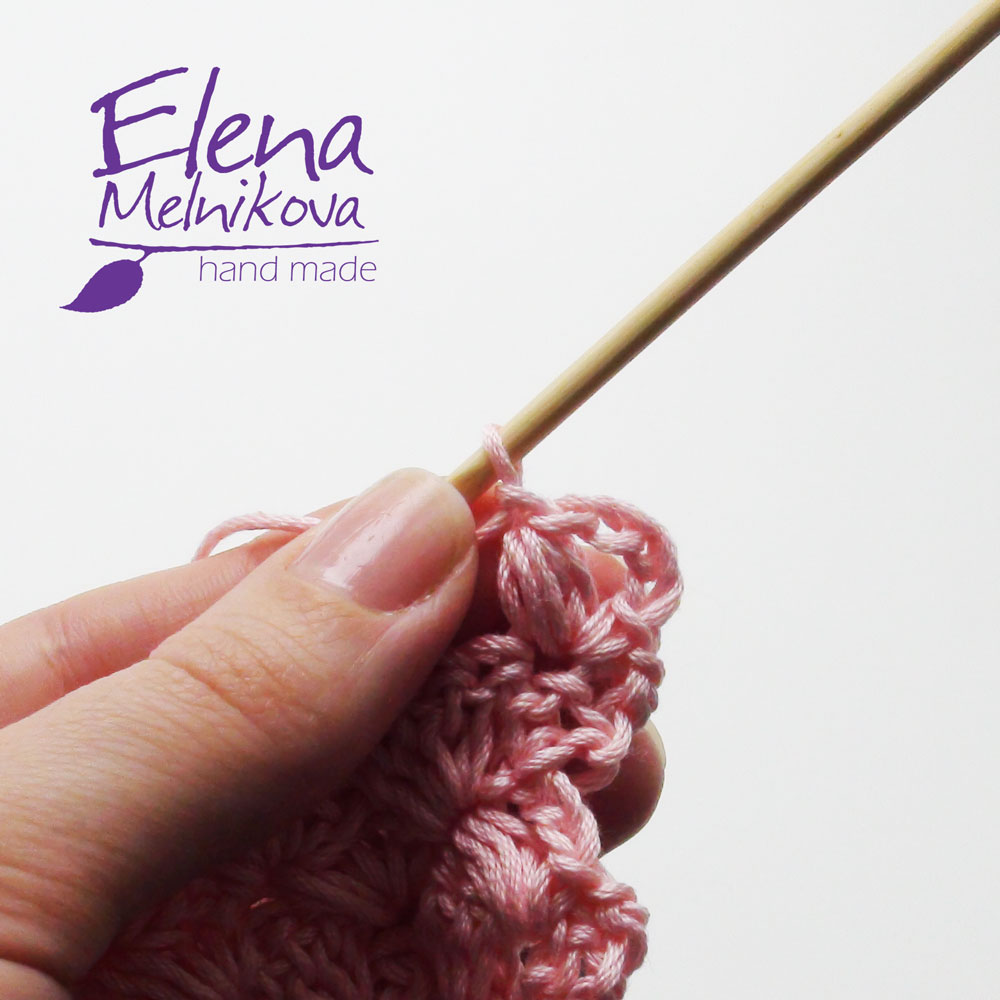 32. A single crochet column in the loop of the top of the fourth column of the group of the previous row, currently under the working loop
32. A single crochet column in the loop of the top of the fourth column of the group of the previous row, currently under the working loop  33. Three air loops
33. Three air loops 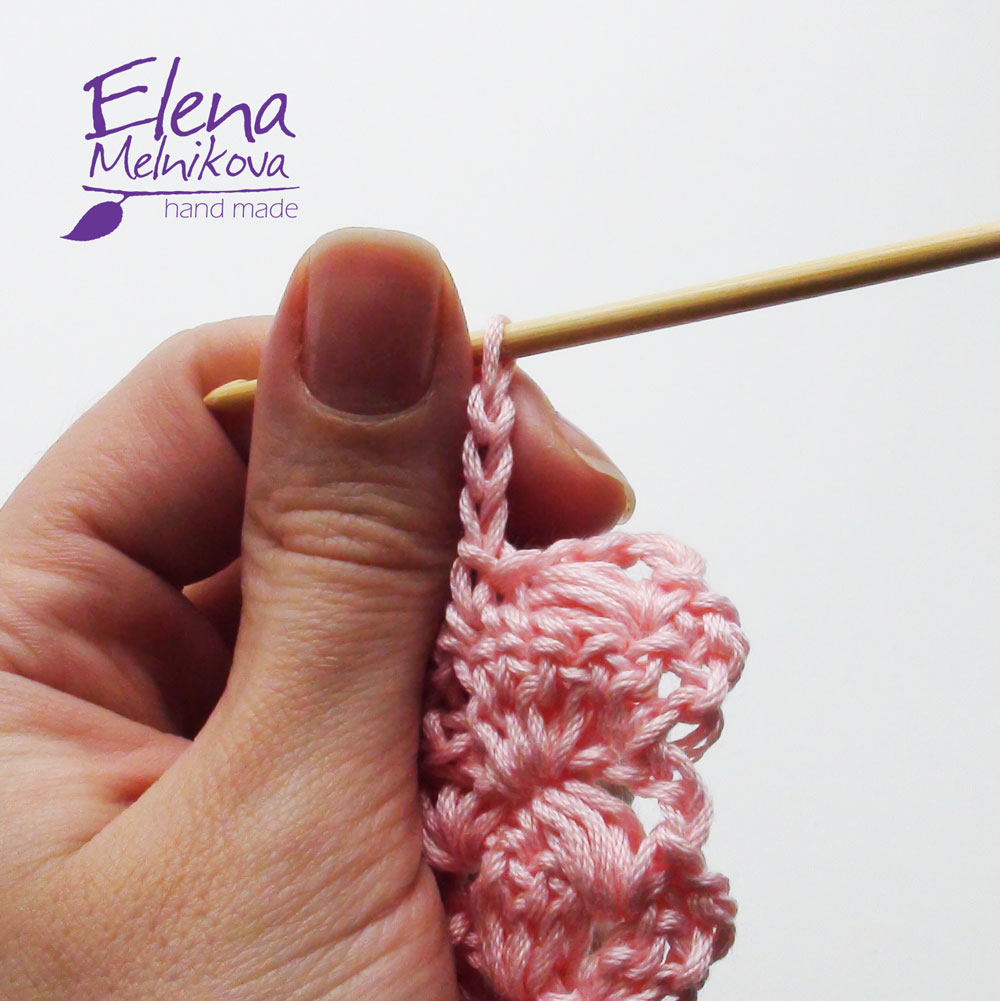 34. Perform a knob from three loops and three nakidov in the same loop, in which a single crochet column is knitted, one air loop
34. Perform a knob from three loops and three nakidov in the same loop, in which a single crochet column is knitted, one air loop  35. Continue drawing to the end of the series, repeating paragraphs 32-34. the last will be a single crochet in the last loop of the previous row
35. Continue drawing to the end of the series, repeating paragraphs 32-34. the last will be a single crochet in the last loop of the previous row 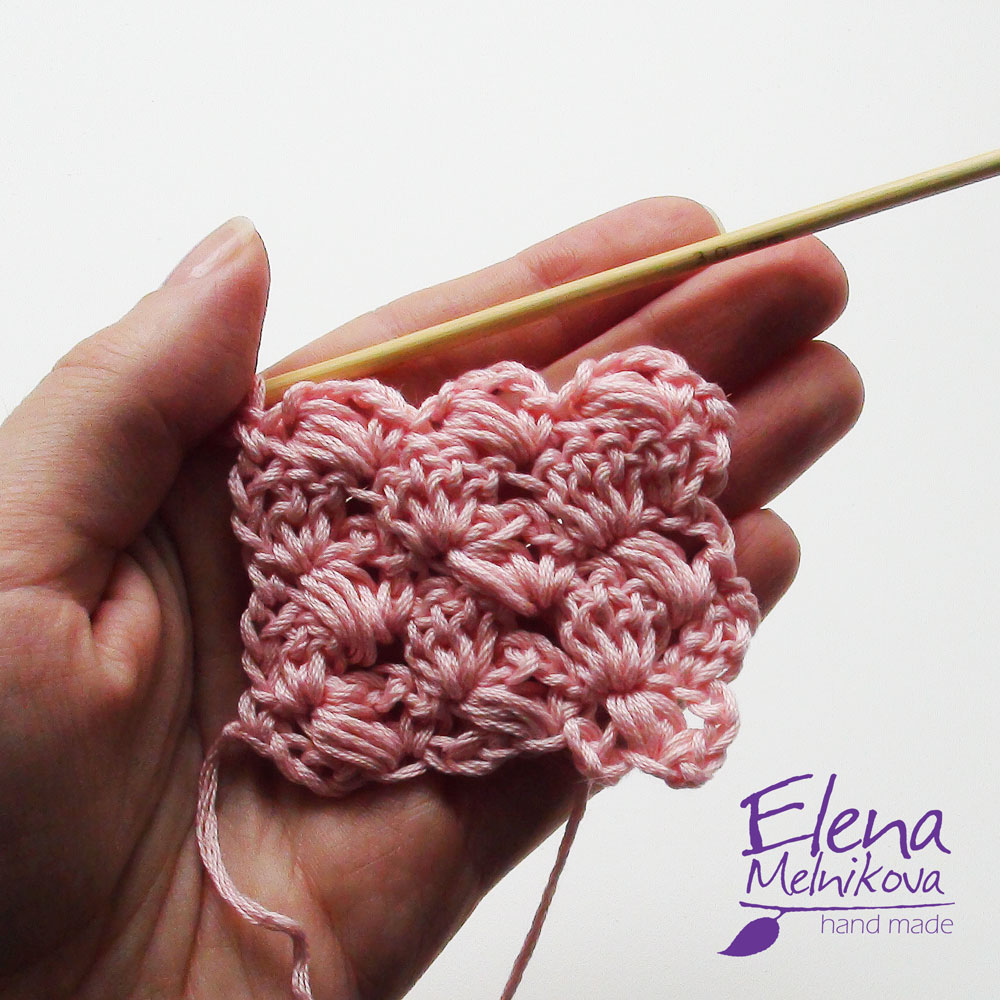 36. This is how we get a picture using the “Openwork” pattern
36. This is how we get a picture using the “Openwork” pattern  This original crochet pattern will add zest to the product on the easiest pattern!
This original crochet pattern will add zest to the product on the easiest pattern! 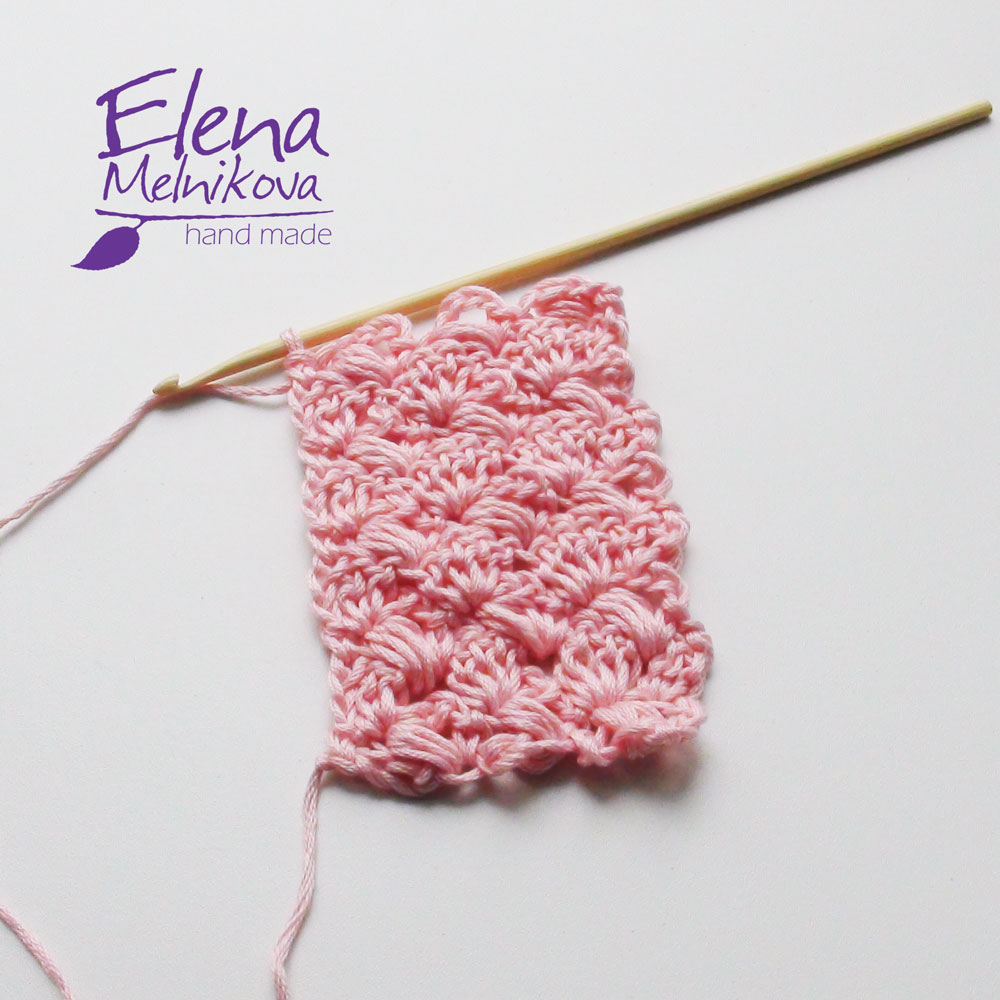 Stay up to date! Be the first to know about new articles! Subscription: “Crochet patterns and motifs” Your e-mail address: * Your name: * Share in the social. networks
Stay up to date! Be the first to know about new articles! Subscription: “Crochet patterns and motifs” Your e-mail address: * Your name: * Share in the social. networks  </a> Navigation by records
</a> Navigation by records
Crochet pattern "Openwork": 14 comments
Add a comment Your e-mail will not be published. Required fields are marked * Comment Name * Email * Website
